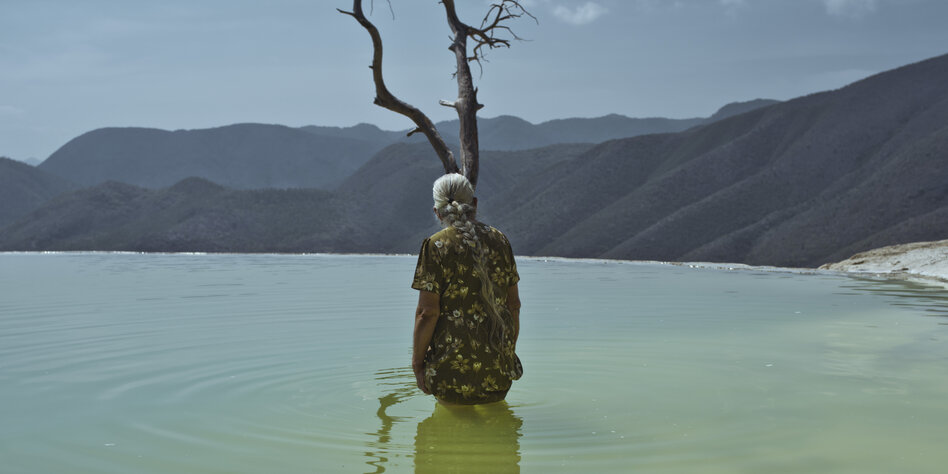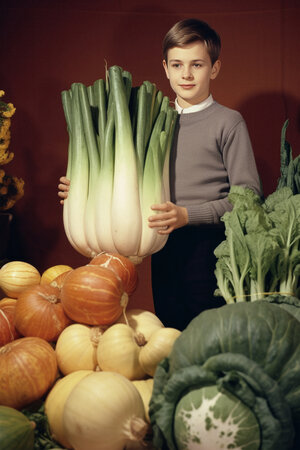“Les Rencontres d’Arles” is dominated by crises, including the election results in France. Yet the photography festival finds a lightness.
Poster motif: Cristina De Middel, “An obstacle in the way”, from: “Journey to the center”, 2021 Photo: Courtesy of the artist/Magnum Photos
In Café de la Roquette in Arles, all the tables are occupied on this summer evening. It is the first day of voting in the early parliamentary elections in France. The young Arlésiens and Arlésiennes are still chatting relaxedly over beer and Ricard. Then, at 8 p.m., the first forecasts: the right-wing Lepenists are far ahead in Arles itself; the RN candidate Emmanuel Tache even got 47.8 percent of the votes.
That is almost 20 percentage points more than the candidate of the Communist Party Nicolas Koukas, against whom Tache will go into the second round next Sunday. Suddenly the atmosphere on the square is oppressive and the voices have become quieter.
There is, however, little evidence of the growing rightward shift in France at the Rencontres d’Arles that is now starting. The budget of the important international photography festival has fallen, but thanks to private sponsors it is not dependent solely on government money, says Christoph Wiesner. Since 2020, museologist Wiesner from Gemünden am Main has been in charge the rencontres. The 55th edition of the festival, founded in 1970, is entitled “Beneath The Surface.” Wiesner speaks of the “overlapping stories beneath an increasingly porous surface of self-location and identity quest.”
Many parts of this year’s rencontres are about overcoming current crises. They are about migration, the history of colonialism or the consequences of climate change. Many artists use humour as a strategy to deal with difficult subjects.
A look back at a lost homeland
Like photographer Cristina de Middel, who was born in Spain in 1975. In her installation ‘Journey to the Center’, in the 15th century church of the Frères Prêcheurs, the photographer, who lives in Mexico and Brazil, follows the migration route from the city of Tapachula in the south of Mexico to Felicity, a small town in California. Geographically, Felicity is considered the ‘center of the world’. With ironic insights on both sides of the wall, de Middel shows how absurd it is to advertise the place for tourism with such a slogan.
Bruce Eesly: “Peter Trimmel wins first prize with his UHY fennel at the Kooma Giants Show in Limburg”, 2023 Photo: Courtesy of the artist
To do this she combines documentary photography and archive material, working visually with stereotypes, which she then deconstructs in an ironic way: young Mexican woman stands in front of the border fence In a T-shirt with an oversized pink Trump face, a man with vague facial features wears a Superman costume with the Trump slogan “Mexico Will Pay.” Or a meter-high Madonna figure is transported on the roof of a small car along with various items. On the other side is a neon sign of an American church with the text “The door to new life is open.”
This year’s festival poster shows de Middel’s work “An Obstacle in the Way” (Una Piedra en el Camino): a woman with gray hair in a long braid, knee-deep in a lake. Looking back at a lost homeland. She seems lost in memories. It is a yearning, very intimate image, tender and vulnerable.
A variation of European garden gnomes
The series ‘Everyday Baroque’ by Indian photographer Rajesh Vora, born in 1954, was first exhibited in Arles in New Delhi in 2016. It documents holiday home settlements of ‘non-resident Indians’ (NRIs) in Punjab. The Indians living in the diaspora only come there on holiday and proudly pose oversized plaster figures on their houses, in crazy shapes of Maruti cars, tractors, tanks, ships with an American flag, Boeings or a meter-high whisky bottle. A variation on European garden gnomes. It seems bizarre, surreal and humorous.
In contrast, the buildings that appear as mere remnants of the water in the series ‘A Fates Brief Memoir’ by the Indian-born photographer Paribartana Mohanty, born in 1982 and documenting places sunk into the sea by climate change, appear as absurd monuments to the irreparable.
In his series ‘New Farmer’, photographer Bruce Eesly, born in Berlin in 1984, collects advertising photos for agricultural magazines from the 1960s, which advertised the ‘Green Revolution’ with genetically modified vegetables for better harvests, with AI images of broccoli or cucumbers enlarged to monstrous proportions.
The fashion photographs of American uniforms in the archives of the Natick Soldier Systems Center from 1960 to 1990 also seem strange. They advertise stylish gear for war zones, moon landings or nuclear disasters. cathartic theory of humor Sigmund Freud was already represented. Does it also help to allay concerns about the RN’s participation in government in the French parliament?



